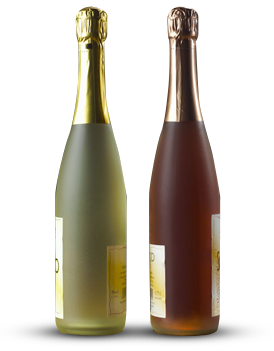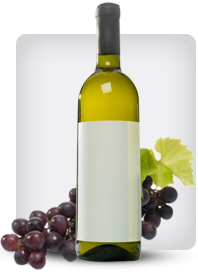

Tag: Growing
Napa Valley Wine Country And Wine Growing Region
Posted on Napa Valley is truly an unbelievable Mediterranean oasis in the middle of Northern California’s gorgeous rolling hills. Nestled inside of what many refer to as the “wine country,” Napa is world-renowned for the incredible grapes and wine it produces. Visitors to the town will be astounded by both the incredible beauty of the area as well as the amazing amount that wine has infiltrated the culture here. It seems that everywhere you turn there is either an entrance to a majestic vineyard, rolling hills of vines, a quaint wine shop, or a sophisticated restaurant offering an extensive menu of fine wines for you to enjoy. A getaway to Napa will truly let you escape from your hectic everyday life, letting you live, if only for a moment, the Edenic, blissful life of Napa Valley.
Located in the heart of the region known as “Wine Country,” Napa contains more than 350 wineries for your enjoyment, most of which ship wine internationally and have gained international fame for their taste and overall quality. More than 3 million visitors per year visit this astounding region, wishing to catch a glimpse of the natural abundance for which the Napa Valley is famed. The reason Napa is so adept at growing grapes is the dry, warm Mediterranean climate afforded to it by its location in a protected valley of Northern California. The soil is very rich and arid, and this fertility combined with the magnificently temperate weather and moderate yet consistent waterfall means an almost ideal location – similar to that of the famed grape-growing regions of France and the rest of southern Europe – for vineyard cultivation. The Napa Valley is already well on its way to becoming an international wine powerhouse, but the discovery of its fertile soil is by no means a new development.
In the middle of the 19th century, pioneer George Yount moved to the Napa Valley and planted the very first crop of wine grapes ever in the region. During his lifetime, the wine industry did not take off, but after he gave his business to his son-in-law, Yount’s original intention finally came to fruition. Grape-growing soon flourished in the fertile Napa Valley, attracting many more affluent growers from around the country and world who were seeking out the Next Big Thing in American agriculture. Charles Krug began Napa Valley’s first actual winery, distilling and creating the first signature wines of the Napa Valley and in the process transforming the valley from what was just an agricultural area into the prosperous distilling and bottling region we know and love today. Interestingly, you can still visit the historic Krug family winery today, bottling many kinds of fine wines such as Cabernet, Chardonnay, Pinor Noir, and Merlot. At the turn of the 20th century, Napa had begun its rise to becoming the formidable and prosperous viticulture region to which visitors now flock from all over the world.
One of the best ways to take advantage of this wine-growing region is to take tours of the seemingly endless number of wineries located in Napa Valley. Surrounded by the majestic, rolling hills that will likely resemble the gorgeous slopes of Tuscany to any who have visited there, these tours will be a great way to get a taste (literally!) of the natural wonders of the Napa Valley as well as get a hands-on look at how some of your favorite wines are created. Usually, these tours take you on a guided tour around their various crops of grapes, then give you a behind-the-scenes look at how their winery operates, from the crushing of the grapes to a glimpse at the carefully-maintained barrels that infuse the grapes with the winery’s signature flavor. These tours can be a great way to get a behind-the-scenes look at how your favorite wines are crafted – and many times they offer free wine tasting as part of the package!
Napa Valley is truly one of the most exquisite regions of California. Covered in glorious vine-lined hills and dotted with quaint little towns that truly make you feel like king or queen for the weekend, taking a trip to this luxurious northern California valley will surely be a highlight of your year.
About Golden Horizon Travel: Golden Horizon Travel offers a different brand of service. A variety of qualities that make our touring experience unique and memorable. Our services are professional, designed to make each tour a personal experience. Top of the line vehicles, for groups of various sizes, ensure that the tour is comfortable.
Cabernet Sauvignon Grape Vine Growing
Posted onThe Cabernet Sauvignon grape is grown in nearly every wine producing country. This grape produces the most widely recognized red wine in the world. The Cabernet Sauvignon grape vine is grown in all types of climates from Canada’s Okanagan Valley to Lebanon’s Baqaa Valley. During most of the 20th Century the grape was the most widely planted premium red wine grape until it was surpassed by Merlot in the 1990s.
The grape is a fairly new variety becoming into existence in the 17th century in southwestern France. The plant is a cross between the Cabernet franc and Sauvignon blanc. The variety is very hardy and resistant to rot and frost. The origin of Cabernet Sauvignon was a mystery for many years. Until recently the gape was rumored to maybe have ancient origins. Even perhaps being the Biturica grape used to make ancient Roman wine. The grapes true origin was discovered in the late 1990s with the use of DNA. Chateau Mouton and Chateau d’Armailhac in the Pauilac, was probalbly the first estates to actively grow the fruit.
The offspring’s of the Cabernet Sauvignon include the cross of the Granache which produced the Marselan , a French wine. In Australia in 1977 a bronze grape was found that is an offspring of the Cabernet Sauvignon. The wine was registered under the name Malian and has sold pale red wine under this name. In 1991 one of the Bronze Cabernet vines produced a white grape that was registered as Shalistin.
The Viticulture of the Cabernet Sauvignon can grow in a variety of climates. When growing the vines in colder climates, more pruning will be needed because the vine uses it nutrients to put on more leaves rather than using its energy to ripen the fruit. The vine is one of the last major grape varieties to bud an ripen usually in one to two weeks. In regions that are too cool, there is a possibility that the grapes will taste like green bell pepper.
The Cabernet Sauvignon is an assertive, bold wine that overwhelms delicate dishes. The wine has a high alcohol level with a flavor that pairs well with fatty red meats. This wine does not pair well with spicy foods due to hotness levels of the capsaicins present in spices like chili peppers. The mild taste of black pepper will pair better with the wine. The wine has a great ability to age and develop in the bottle. As the Cabernet wine ages new flavors and aromas can emerge, and add to the wine. In the past century the Cabernet has enjoyed a swell of popularity as a noble grape. The grapes are well suited for California and Australia.
In Australia the Cabernet is the second most widely planted red wine grape, following the Shiraz with which it is often blended. Whereas in California the main stylistic difference in the Cabernet Sauvignon is whether it is grown on hillside/mountains vineyards are those of flatter terrain. The mountain side wine tends to be a deep inky color with a strong berry aroma.
Happy Grape Growing,
S. S. Barnett
popular posts
-

Top-rated Napa Valley Cabernet Sauvignon 2025: A Vintage of Elegance and Power
11-13 2025The 2025 vintage in Napa Valley is already being heralded as one for the history books. A near-perfect growing season, marked by a mild Read More
-

Top-Rated Old-Vine Zinfandel 2025: A Vintage of Power and Poetry
11-10 2025The year 2025 has bestowed upon Zinfandel lovers a vintage to remember. While trends in the wine world come and go, the profound depth Read More

